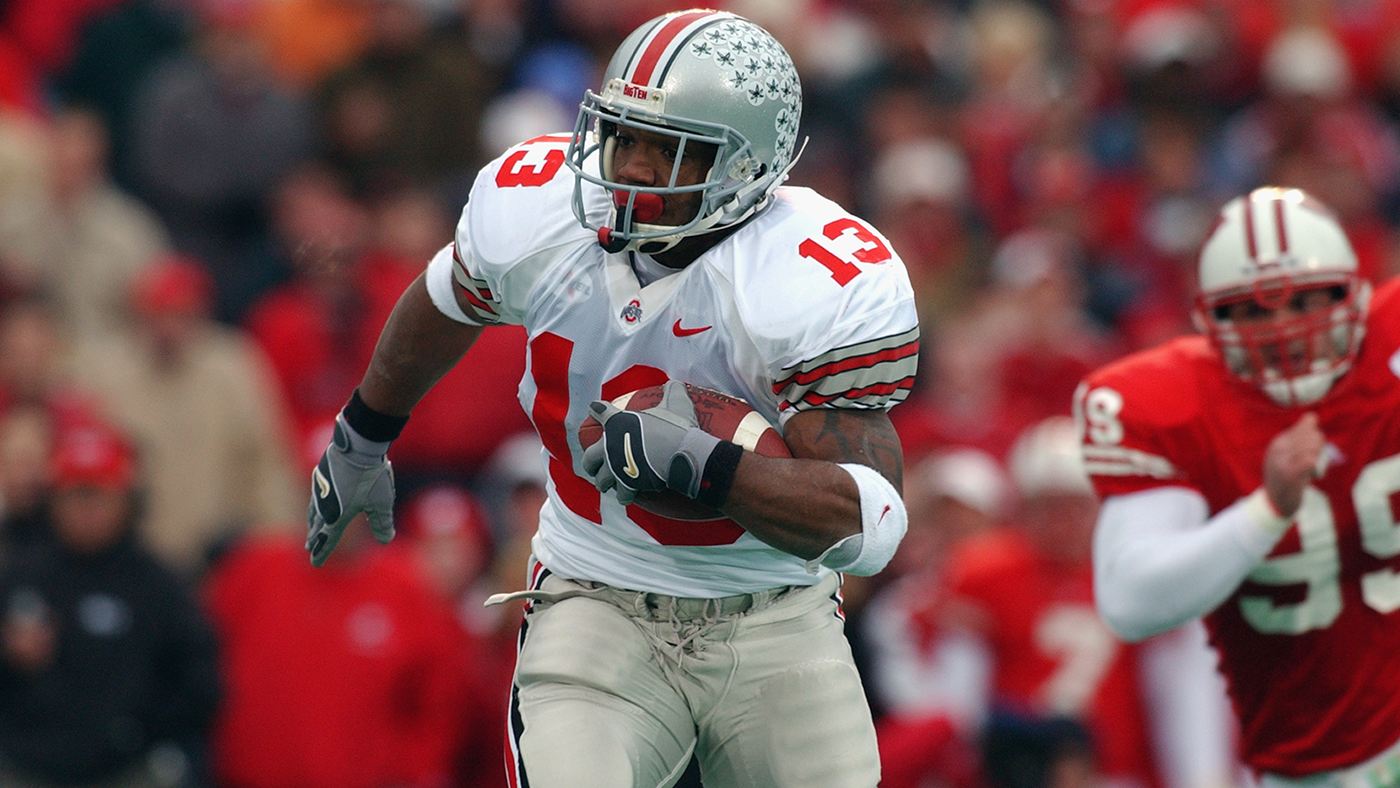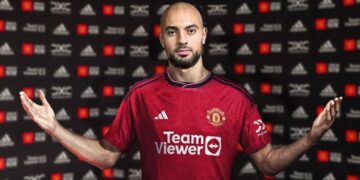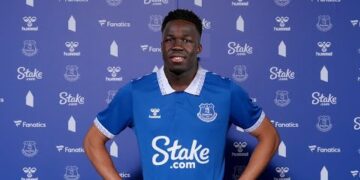In the waning moments of Ohio State’s postgame media availability last month, Jeremiah Smith was asked the question a lot of folks couldn’t wait to be answered. It’s the question that pushed the conversation from a national championship debut for the talented freshman receiver to Smith’s next logical destination.
To be specific: Is the 19-year-old with a grown man’s body, equipped with a set of Velcro hands, ready to play in the NFL right now?
“Hah,” Smith said, a bit taken aback by the question from CBS Sports. “I don’t really know how to answer that question. I’m just a freshman, happy to be in college football.”
Except when pressed, Smith did know how to answer the question.
“I definitely think I can [play in the NFL] for sure,” Smith asserted.
He is not alone. The No. 1 recruit from the Class of 2024, Smith is among a handful of college freshmen – or younger – who have ever had the talent to play in the NFL. Among them are running backs Adrian Peterson (Oklahoma), Leonard Fournette (LSU), Herschel Walker (Georgia) and Marcus Dupree (Oklahoma), as well as defensive linemen Jadeveon Clowney (South Carolina) and Ed Oliver (Houston).
Amobi Okoye is believed to be the youngest player taken in the draft era (since 1966). Okoye moved from Nigeria to Huntsville, Alabama, as a 12-year-old. At age 16, the defensive tackle played 13 games at Louisville as a true freshman. He was the 10th pick of the 2007 draft two months before his 20th birthday. Okoye played five years in the NFL.
But the discussion here is less about whether such players could play in the NFL at a young age; rather, it is about whether they should have the opportunity. Since 1990, the NFL – in partnership with the NFL Players Association – has required players to be three years removed from their high school graduation to be eligible for the draft.
As it stands, Smith would have to play two more college seasons to be eligible for the 2027 draft. In the moment, that seems more like confinement than a requirement. In his rookie college season, Smith led the Big Ten in receiving and receiving touchdowns. At a school that has turned out a receiver or two, Smith also broke Cris Carter’s 40-year-old school freshman receiving record.
“I just can’t let that statement get in my head,” Smith said.
His performance to date is so impressive it already portends a possibly hazardous navigation of the next two years.
Smith is also among a handful of freshmen ever to get a total disability insurance policy based on his NFL potential. The policy protects the receiver until that ’27 NFL draft, even if Smith “steps off the curb and gets hit by a car.”
“That validates that the market is speaking [about his value],” said Michael McCann, a University of New Hampshire law professor.
The validation from inside the game has been gushing from evaluators since Smith took the field.
“In my opinion, he would be the top wide receiver in this class,” one NFL scout told CBS Sports. “Likely top 10, top 15 pick [overall] in the 2025 draft if he could come out. Immediate starter traits with a chance to become an impact player.”
CBS Sports draft analyst Mike Renner has been scouting NFL talent for a decade.
“Smith is easily the best freshman wide receiver I’ve seen since I started scouting,” Renner said. “He’s already the best wide receiver in the country. Physically, [there are] very few comps for him already.”
Former Ohio State offensive coordinator Chip Kelly both shaped Smith and profited from his talent.
“The one thing people don’t realize is he doesn’t act like a freshman,” Kelly said before heading to the Las Vegas Raiders recently. “He acts like he’s a 10-year NFL veteran. His work ethic, he practices all the time. He doesn’t want to take a play off. They try to get him on Thursday practice [saying], ‘Hey, don’t run this route full speed on the back side because we’re not throwing it to you.’ He’s like, ‘No, I have to get better.'”
Jeremiah Smith’s all-time freshman season ends with title-clinching catch; now he enters new realm of stardom
Richard Johnson
Carter is largely considered the best receiver in Ohio State history. He played for the Buckeyes from 1984-86 before a 16-year Hall of Fame NFL career.
“He is everything you would want from a freshman receiver,” Carter said of Smith. “He’s the best player in the country … He has the professional mentality like some of the other great receivers at a young age [like] Larry Fitzgerald, Calvin Johnson.”
Over the years, the ironclad nature of that NFL rule has been baked into any discussion of those who would dare test it. But that’s the point regarding Smith. Not only is he good enough currently to play as a pro on the field, he plays in a program that has a shining example nearby of how to take on the NFL in the courtroom to overturn the rule.
Former star tailback Maurice Clarett left a trail of legal breadcrumbs to follow. Clarett, now 41, left Ohio State in disgrace in 2003 armed with two distinctions:
1) Like Smith, he had the talent to play right away in the NFL after a freshman season in 2002 that resulted in 1,237 rushing yards and a national championship.
2) He is the last and, to date, only player to have successfully taken on that NFL draft rule.
Clarett won the right in district court to be drafted following that 2002 freshman season. The decision was overturned on appeal in 2004 by the 2nd U.S. Circuit Court of Appeals (by current Supreme Court Justice Sonia Sotomayor). The Supreme Court at the time refused to hear the case.
“I think we were right the first time …,” Alan Milstein, the lead attorney in Clarett’s case, said recently. “If he couldn’t play in the NFL, he wouldn’t be drafted.”
That was the basic argument. Clarett had the talent to be drafted. All he needed was a chance. Like Clarett, if he chose this route, Smith would be drafted highly. But that’s not really the point. Clarett sued the NFL because it had – in his view – colluded to keep him from being drafted.
“The 2nd Circuit basically said that anything labor and management agree on is fine with us,” Milstein added. “I think a lot since then has changed.”
It has long become a litigious society. The NCAA has been legally gutted from the inside out because of similar antitrust violations that Clarett alleged against the NFL. Milstein and his legal team contend the 2nd Circuit (located in New York City) ignored Mackey v. NFL, decided in 1976.
‘Don’t be in a rush’: Maurice Clarett’s advice to Jeremiah Smith as Ohio State freshman rises to superstardom
Dennis Dodd

Applied to Clarett, Mackey asserted the running back wasn’t subject to the NFL’s rule because he wasn’t part of the players association.
“The rule must impact only those within the bargaining unit,” Milstein insisted. “The kid who is outside the bargaining unit is not subject to that. But the 2nd Circuit ignored Mackey.”
Since that time two decades ago, there has barely been a hint of protest from underage football players. Maybe it’s because there have been so few of them in this unique position. But anyone who saw Walker rush for 1,600 yards as an 18-year-old Georgia freshman in 1980 knows he could have played in the NFL. The same for Oklahoma’s Peterson, who finished second in the Heisman voting as a freshman, falling 75 yards short of 2,000 rushing yards.
The last iteration of the XFL did allow inclusion of players straight out of high school. (No XFL team ever signed such a player.)
These days, Clarett is a successful speaker and entrepreneur. He has become close to head coach Ryan Day and is around the program in an unofficial capacity.
“I wouldn’t advise him to try to challenge [the NFL], push or do anything I tried to do,” Clarett said of Smith. “You’ll be able to make money there. Just enjoy it all, man.”
For this NFL discussion, Smith’s primary concern should be his second contract. The sooner he can get to it, the better.
“It’s something I dreamed of as a kid,” Smith said of the NFL. “I’m not thinking about the league right now.”
At least not yet.
Read the full article here



























Discussion about this post